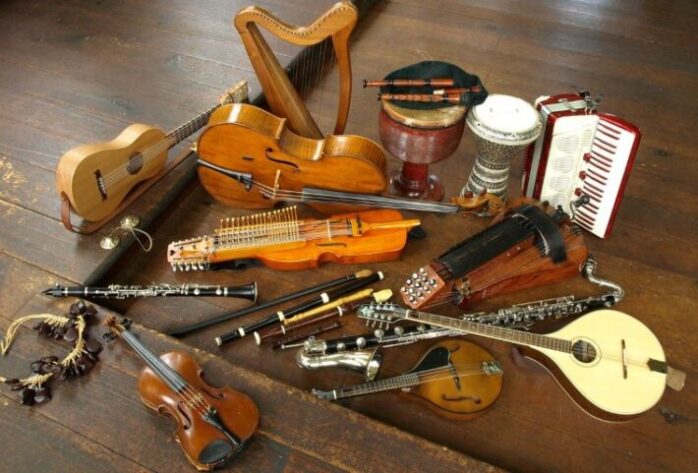
We often wish to do so much, but time and motivation aren’t always on our side, especially considering the insane responsibilities that come with adulthood.
Learning a musical instrument shouldn’t have to be among the things you keep putting off.
If anything, the therapeutic nature of playing an instrument is just the escape you need when life gets a little too crazy and overwhelming.
As long as you can dedicate a few minutes of your day every day to learning an instrument, I’ll help you figure out the easiest musical instruments to learn.
Here we go!
5 Instruments That Are Easy to Learn
1. Piano

The piano is regarded as an instrument of instant gratification because simply pressing on a key will produce a pleasant sound.
You don’t need to hold the instrument up while playing it, and neither do you need to concern yourself with turning it.
Furthermore, learning the piano forms the basis of numerous music-related aspects. Did you know that this is among the few instruments that incorporate all elements of music, comprising harmony, melody, rhythm, and dynamics?
This instrument aids in teaching beginners how to listen for the tone and pitch on notes. It, therefore, forms a great foundation of music that can apply to other instruments.
It’s clear layout makes it incredibly easy to learn music because a single note corresponds to a single key.
You can quickly learn simple melodies on the piano, meaning you would be rewarded for your accomplishments earlier, further encouraging you to keep practicing.
Another advantage is that the piano grows with you as your interests and skills develop further and as you learn to play at more complex levels.
There are definitely challenges that come with learning to play the piano. Sites like Steinway & Sons Upright/Vertical Pianos can give you more information about this. However, it’s regarded as an easy instrument because it appeals to our visuality, and the playing technique is relatively easy to pick up.
2. Drums
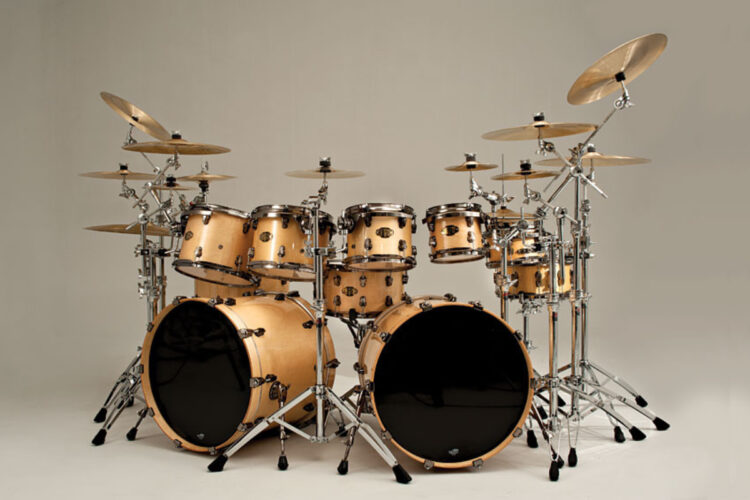
Drums come in various types, the most popular being electronic drums and bongos.
The traditional drum kit comes complete with cymbals, drumsticks, snare and bass drums, and even a stool.
Modern electronic drums are far less noisy, and they come in a portable kit comprising a kick drum, pads, and a drum module. Bongos come in pairs, and they are small and incredibly portable.
Regardless of the type in question, these musical instruments provide a satisfying percussive experience. Even if you lack any technical knowledge, it’s fun to bang on them, relieving some stress in the process.
Mastering the drums might be a challenging undertaking, but grasping the basics of drumming is incredibly easy. This instrument focuses on rhythm and sets the tempo for all other instruments.
An enhanced knowledge of rhythm will prove worthwhile should you choose to expand your musical skills to other instruments or aspects of music.
The best part is that drums are a truly social instrument. Playing the drums means that you will be playing alongside other instrumentalists so you can be part of a band or a drum circle.
With the drums, you can’t play any wrong notes, and they are the perfect instrument if you lack the self-confidence to learn a tuned instrument.
3. Glockenspiel
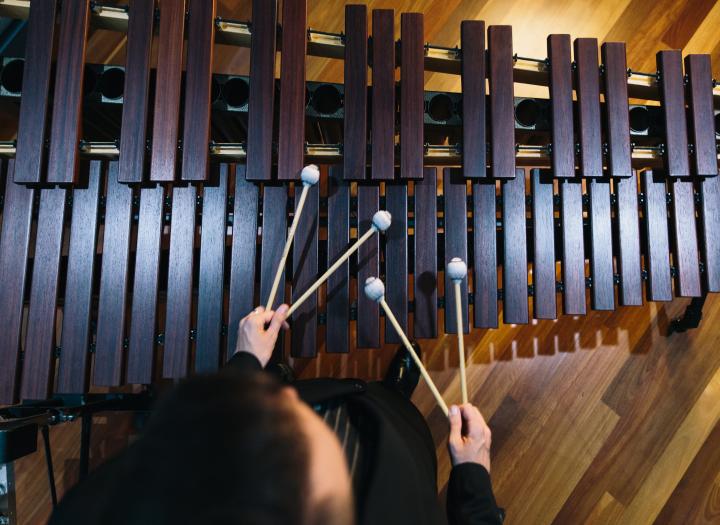
Similar to the drums, the glockenspiel is also a percussion instrument.
It looks a lot like a xylophone, only smaller, has a higher pitch, and uses metal bars instead of wooden ones.
This similarity makes the glockenspiel an excellent instrument for those who wish to connect with their inner child and uncover the musician that lies within.
This social instrument is commonly used in marching bands, so picking it up would be a great way to expand your social circle through joining a community of band members.
Aside from the marching band, the bright and cheery sound produced by a glockenspiel popularly features on the orchestral repertoire and even in some rock songs.
By allowing you to learn pitch and rhythm, this instrument provides a solid foundation in music theory. It also helps one understand the layout of the Western scale, and this will prove vital should you choose to learn another instrument later on.
The straightforward playing technique is why the glockenspiel is considered among the easiest instruments to learn. It basically involves striking the metal bars using small hard mallets with metal or plastic heads.
The bars are actually set up like a keyboard or piano, and you would hold the mallet exactly as you would while hitting a snare drum.
4. Ukulele
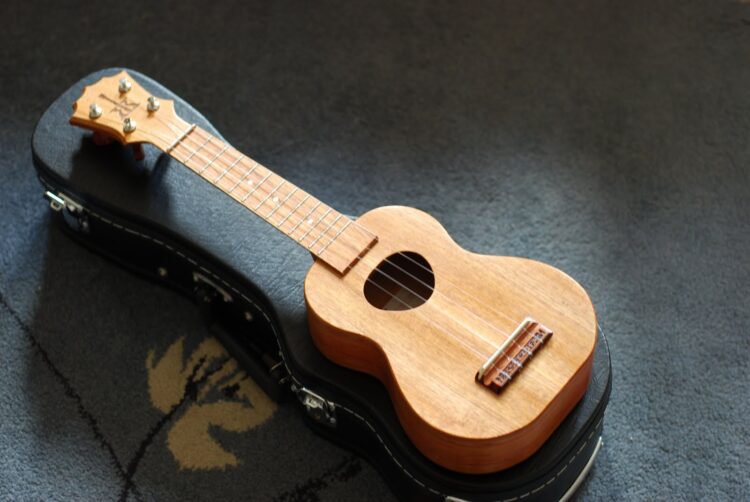
It’s small and lightweight, so it is expected that the ukulele would be an easy instrument to pick up. Besides, this instrument is relatively quiet, which is perfect if you wish to learn an instrument but without being a nuisance to your neighbors.
The string tuning on a ukulele isn’t linear, which means that it isn’t set as low to high sounds. For this reason, it would be confusing to switch from the ukulele to the guitar or violin, which are linear instruments.
That aside, though, the uke can still be a great way to familiarize yourself with the fundamentals of stringed instruments, which you can then transfer to the guitar or to the banjo for example. To understand the differences between ukulele and banjo, I’d recommend you check out this detailed article from musictechhub.com.
A ukulele player can quickly learn melodies, chord shapes, and strumming patterns, allowing one to play familiar songs in a very short amount of time.
If you enjoy singing along as you play, then the ukulele would be a perfect instrument for you.
As far as technique goes, the closely spaced nylon strings are easy to press and soft to the touch, so you will not struggle with callouses.
Better yet, this inexpensive instrument hardly requires any maintenance. All you will have to do is change the string occasionally, and that’s all!
5. Recorder
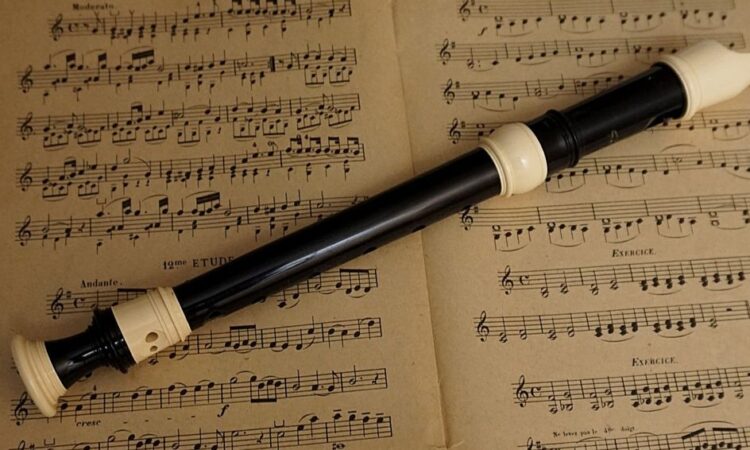
If you are more inclined towards a woodwind instrument, then the recorder is the easiest one to learn.
Compared to the flute or clarinet, a recorder has a much simpler mouthpiece. Additionally, it is inexpensive and pocket-sized, and all these factors make it the ideal choice for someone just starting out on musical instruments.
Most people overlook the recorder because they regard it as being too simple. Nevertheless, you will be surprised to learn that this instrument actually has some pretty amazing music written specifically for it.
Harmonizing finger positions and coordinating that with your breathing and tongue movements is relatively straightforward and can easily be mastered with practice.
Once you have mastered the recorder, you will find that it’s easy to progress to the other, more complex woodwind instruments, should you wish to do so.
Conclusion
Learning a musical instrument takes continuous and consistent practice, regardless of how easy an instrument may be.
So be sure to put in the work, even when you may not feel up to it, and you are bound to see impressive results much sooner than you’d expect.








